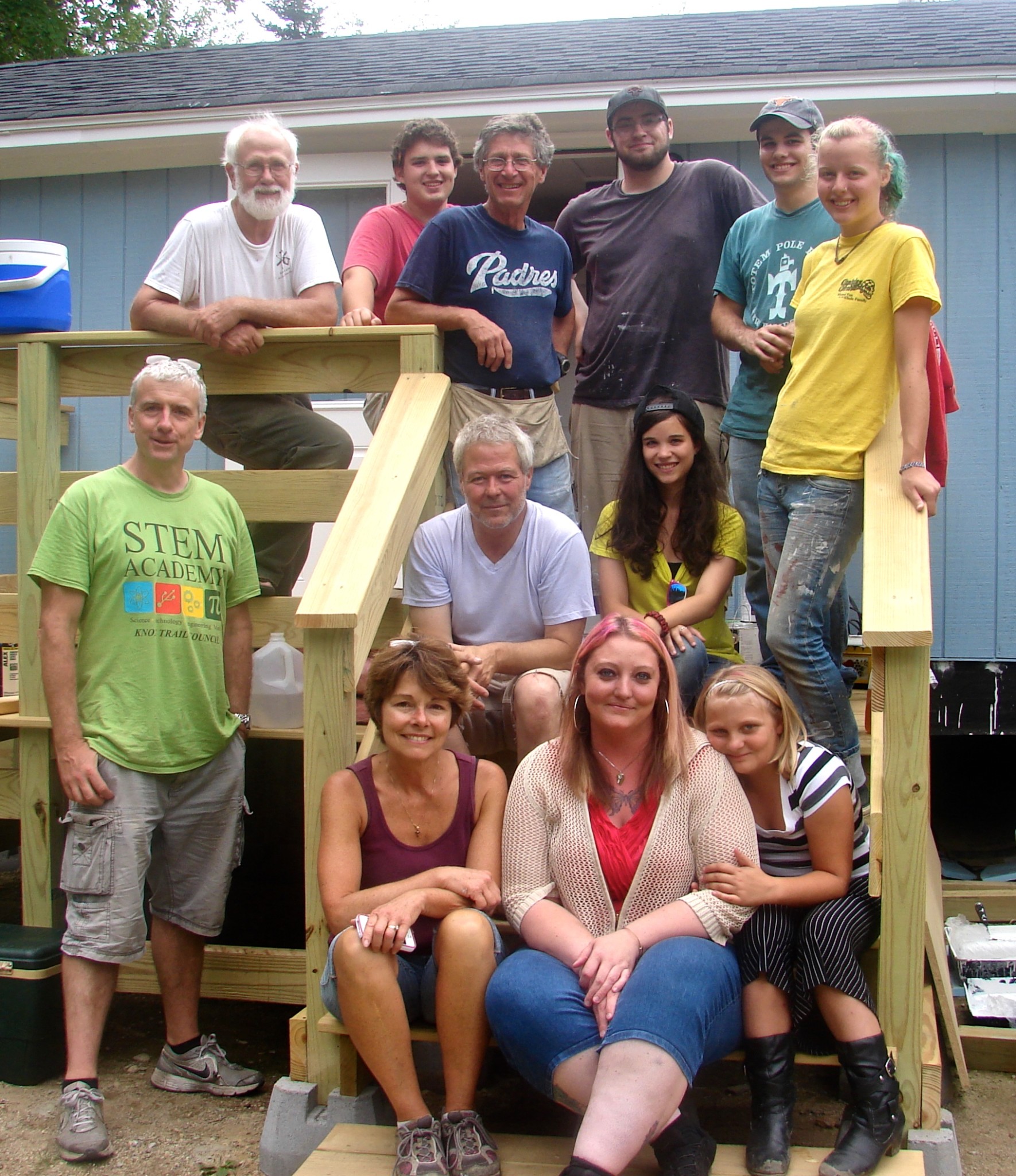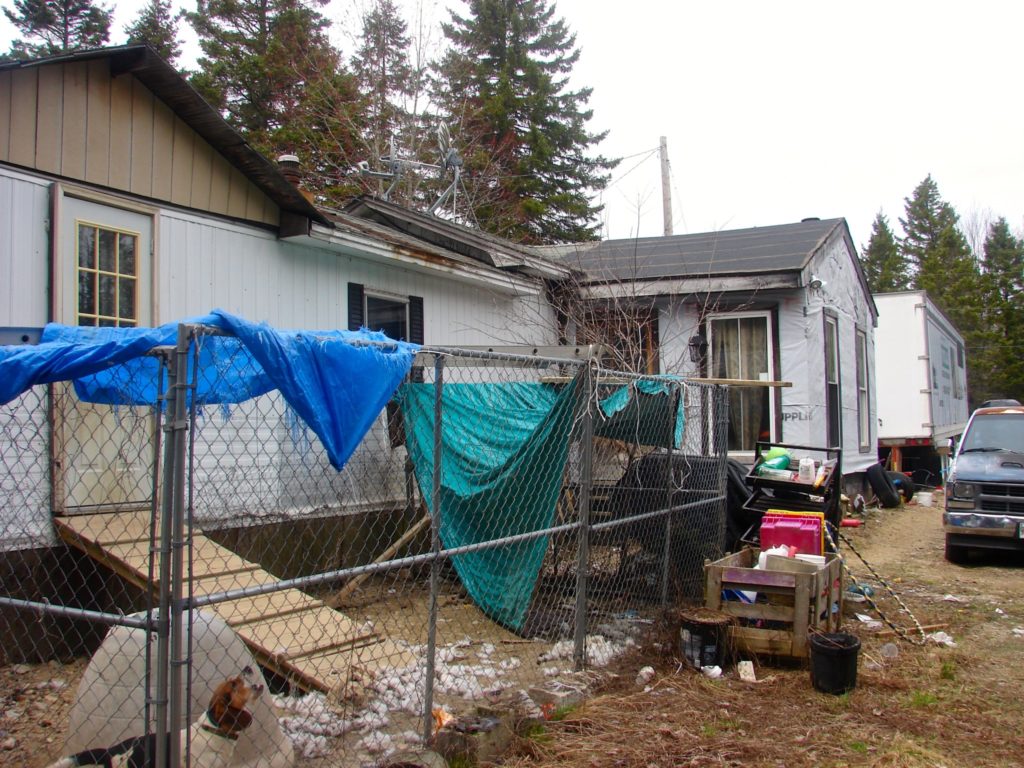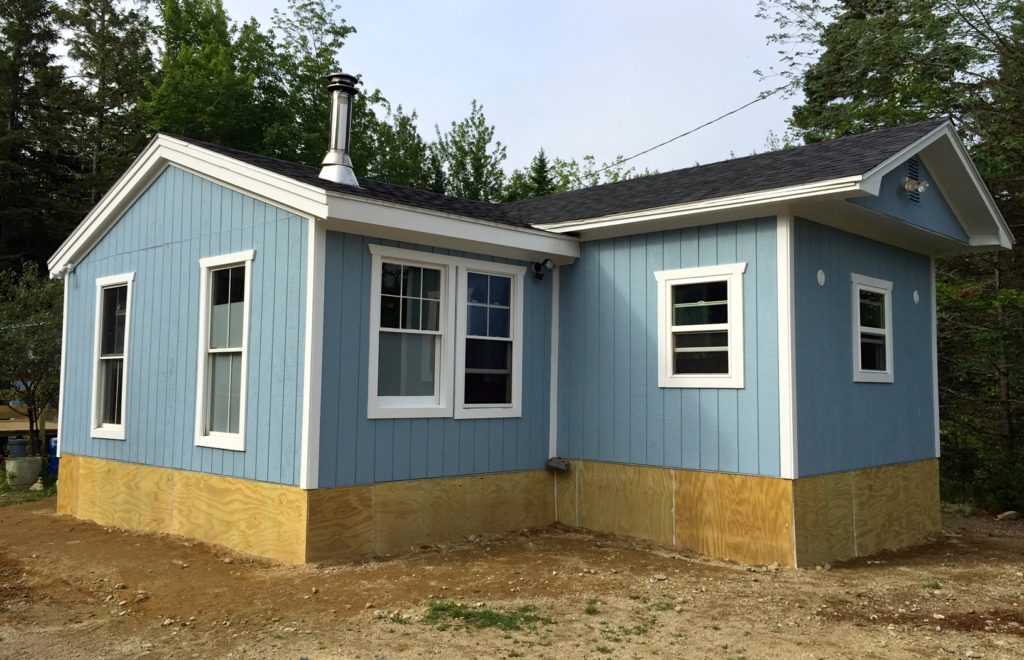Story by Nancy Saunders
Photos by Scott Shaw
The Maine Seacoast Mission’s housing rehabilitation program based at our Downeast Campus addresses fixes up or rebuilds twenty houses a year. Repairs and renovations range from painting to insulated mobile home skirting to new roofs. Every year we completely rebuild two mobile homes or houses for local families. The families contribute sweat equity to the rebuilding projects and often have one or more children active in the EdGE program.
Downeast Campus Director of Service Programs Wendy Harrington sent this profile, written by Nancy Saunders, of a mother and daughter who reached out to the Mission’s Housing Rehab Program — and the result. The before-and-after photos are from Housing Repair Program Coordinator Scott Shaw.
“And suddenly you know that it’s time to trust in the magic of new beginnings.” This inspiring quotation, framed and hanging in the hallway of Tara Small’s newly rehabbed mobile home, expresses the sense of marvel she and her daughter feel as they settle into their warm, safe, structurally sound, and attractive home.
The significance to Tara and her daughter of the transformation of their home can be appreciated more fully by stepping back in time less than one year. Their home had leaks in the roof, mold, decaying floor boards, dilapidated siding, little insulation, and an interior dating back to 1968. Tara says her normally outgoing daughter felt unable to invite friends to their home because of its condition.
Tara herself, after coping with a severe, chronic illness requiring multiple surgeries and hospitalizations from the time she was fifteen years old, as well as a difficult divorce, had all but given up. She became very depressed, tearful, unable to sleep at night nor function during the day. She says “I felt like a turtle, unable to leave my shell.”
Tara applied to the Maine Seacoast Mission’s Housing Rehab Program. This program’s efforts are based on the Housing First philosophy, which asserts that people can improve their lives (i.e, seek employment or education, and become more engaged in the community) only after they have a home that is safe, warm and dry. The Mission’s Housing Rehab Program applicants must be able to demonstrate both financial and housing need, be involved in their community, and agree to contribute 200 hours of “sweat equity”.
Tara was selected this Spring, and work began in the Summer by the many volunteers who come to the Mission for a week at a time, and donate their time and skill to the extensive rehab process. Tara and her daughter became very attached to these groups over the summer. One of them even knitted prayer shawls to match the colors of the new rooms.
And what colors they are! Tara’s daughter’s bedroom is painted “passionfruit pink with cupcake brown trim.” She placed her bed at an angle, and using PVC pipe, arranged the curtains to create a canopy. One of the groups made a grow stick for her wall. She provided her own decorative stickers and put her porcelain dolls on her dresser.
Tara’s room is purple, which is the awareness color of her medical condition, and it reminds her to be positive and hopeful. She has pictures of butterflies on the walls — delicate symbols of transformation, and a framed quotation which reads: “a dream is a wish the heart makes”.
Their living room is green and its theme is hunting and fishing, which both Tara and her daughter enjoy. The kitchen is blue and will feature light houses and lobster boats. The new cabinets, stove, and hanging pots and pans invite cooking and social gatherings.
The “transformation hallway” features pictures of the volunteer groups, as well as Scott and Wendy. “We will never forget any of them”, says Tara. “It is from the bottom of my heart that I say ‘thank you'”.



